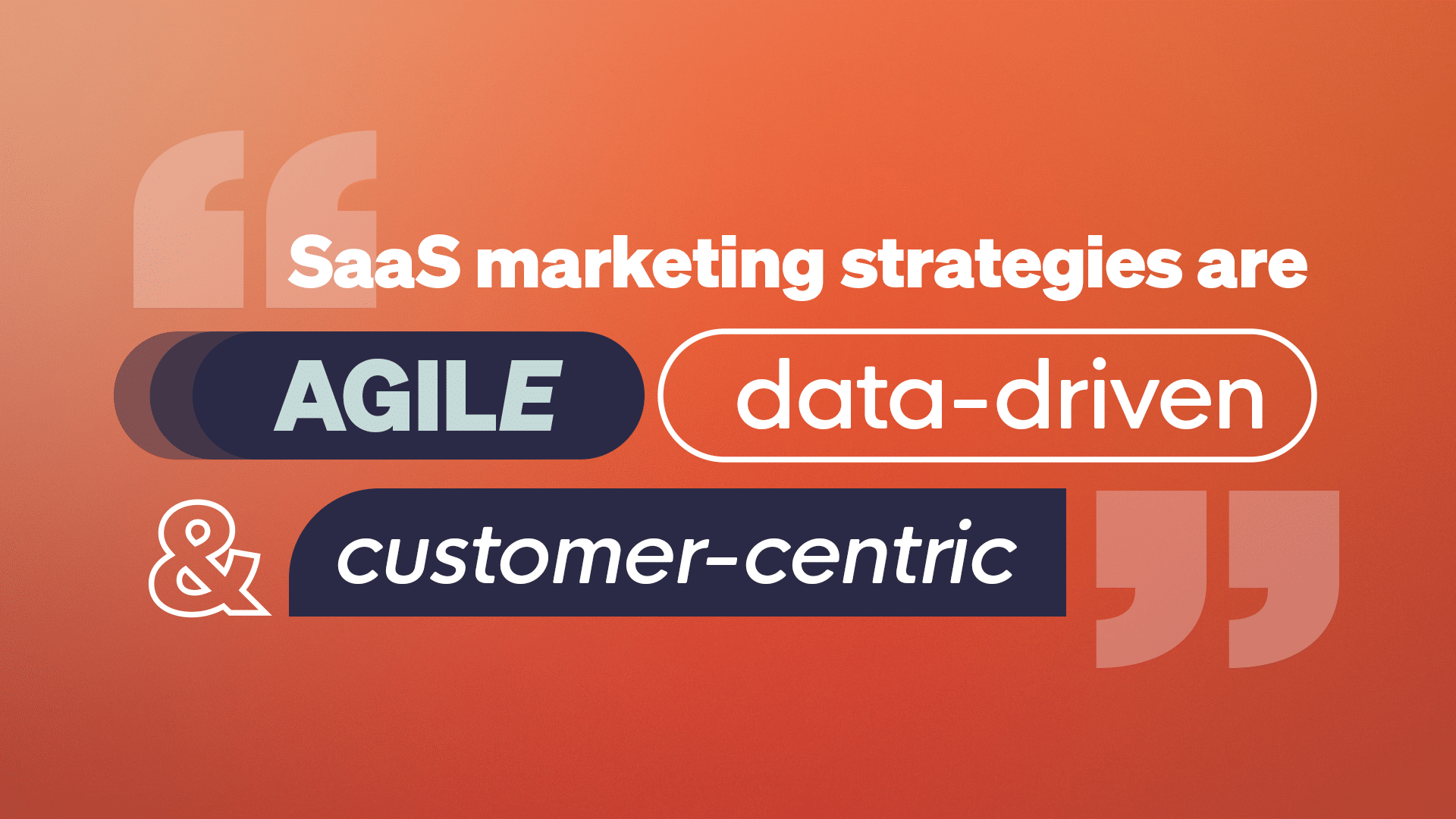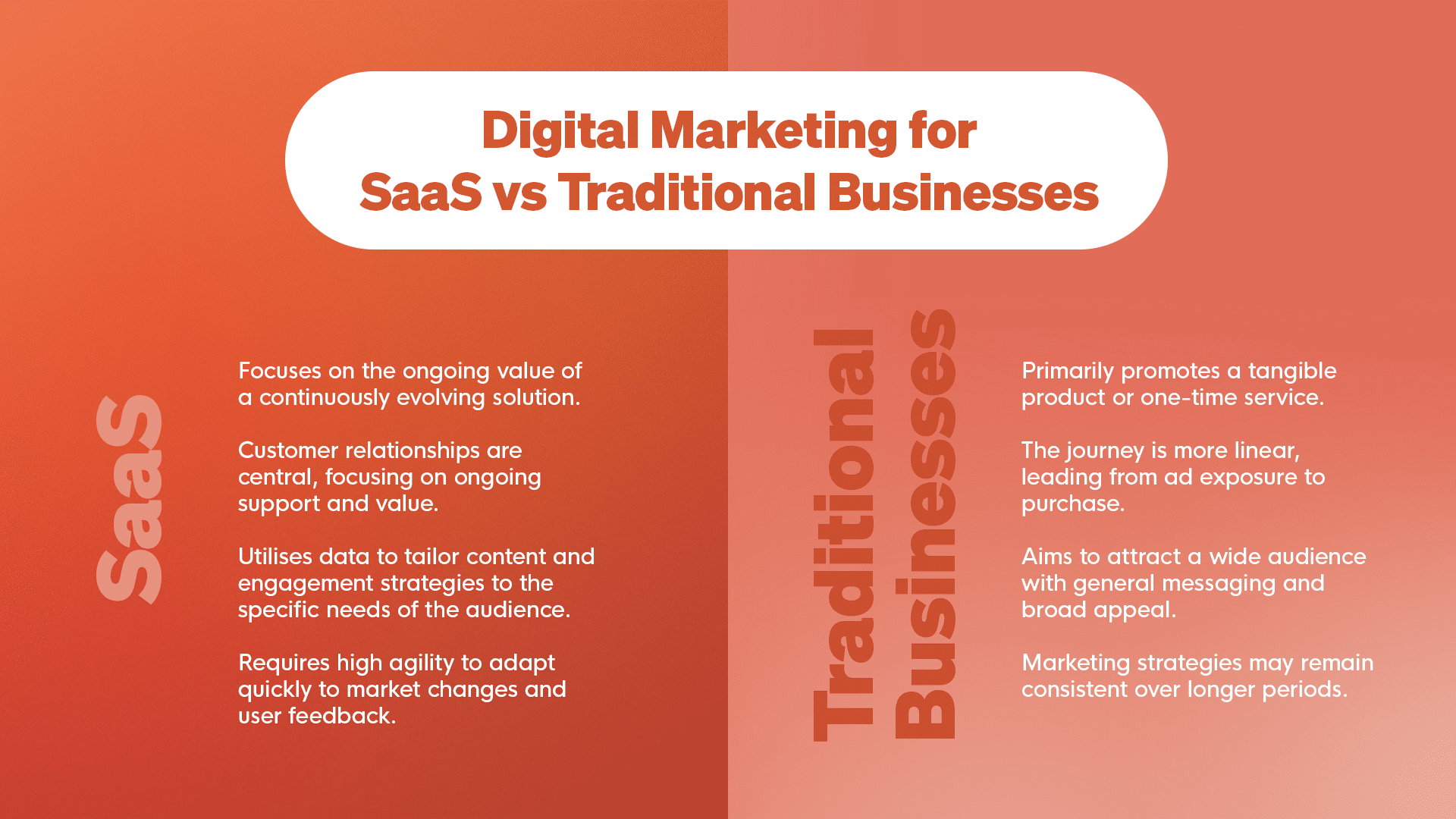SaaS Social Media: What is it and how is it different from other Social Media Campaigns?
How to market a SaaS product effectively? The key lies in understanding the nuances of SaaS social media marketing. Unlike traditional campaigns, SaaS marketing on social platforms emphasises the ongoing value and adaptability of cloud-based solutions. It’s not just about showcasing a product but presenting a continuously evolving solution tailored to the user’s needs. Why is this SaaS solution more efficient for your business? How does it stand out in a crowded market? Using social media management SaaS tools, businesses can streamline their engagement, enhancing their connection with the target audience. Implementing a Scroll-stopping strategy can further amplify this connection, ensuring that your SaaS product captures the immediate attention of potential customers. The distinction of SaaS is its dynamic nature: it evolves with user feedback and technological advancements, guaranteeing that customers always access the most current and refined solutions.
The Rise of SaaS in Business: What Makes SaaS Stand Out?
Ever wondered why SaaS products have such a buzz around them? It’s not just about the innovative software they offer. Dive a little deeper, and you’ll see it’s about the promises they make and the relationships they build. Think about your favourite brands. Do they just sell you a product, or do they offer a continuous service that evolves with your needs? That’s the essence of SaaS. Now, when it comes to marketing these products, especially on platforms like social media, there’s a twist. Instead of just pushing for a sale, the focus shifts to building trust and fostering long-term engagement. So, have you considered the unique approach needed to market a SaaS product effectively?
The SaaS Revolution in Various Industries
Over the years, marketing has witnessed profound shifts. Gone are the days when newspaper ads were the primary mode of communication with consumers. Today, the digital landscape is dominated by innovative strategies, with software as a service (SaaS) playing a pivotal role. Companies like Salesforce and Hubspot are not just participants but leaders in this transformation. Their success can be attributed to their deep understanding of specific industry requirements and their prowess in offering scalable solutions tailored to these needs.
SaaS marketing is distinct from traditional methods. Instead of broad, interruptive tactics like TV commercials, it emphasises a personalised customer journey. The objective is clear: equip potential customers with comprehensive information, enabling them to make well-informed decisions. This approach is rooted in understanding the unique behaviour of SaaS buyers, who differ significantly from standard buyers.
SaaS marketing strategies are agile, data-driven, and customer-centric. Metrics such as customer acquisition cost, lifetime value, and retention rate are significant. These metrics guide SaaS companies in their decision-making processes, ensuring they remain competitive and relevant. In contrast, traditional marketing often leans on intuition and broader messaging. It’s essential to recognise that SaaS marketing taps into unique trends, leveraging best practices tailored to the behaviour of SaaS consumers. This focus on trends and adaptability is what sets SaaS marketing apart from conventional strategies.
The evolution of marketing from print ads to dynamic SaaS strategies is nothing short of remarkable. As the industry continues to evolve, SaaS will undoubtedly remain at the forefront, shaping the future of marketing and catering to the ever-changing needs of consumers.
Diving Deep: SaaS Digital Marketing vs. Traditional Digital Marketing
Digital marketing has always been about reaching the right audience at the right time. But how does SaaS digital marketing differ from its traditional counterpart?
1. The Nature of the Product: Promises vs. Products
- SaaS Digital Marketing: It’s not just about promoting a product; it’s about making promises. SaaS buyers, known for their meticulous scrutiny, demand solutions that exceed their expectations. The marketing approach must captivate these discerning buyers, making them feel there’s more value in the product.
- Traditional Digital Marketing: The focus is primarily on the tangible product or service. The buyer’s journey might involve seeing an ad, comparing products, and making a purchase.
2. The Buyer’s Journey: Experience vs. Exposure
- SaaS Digital Marketing: The journey emphasises tangible experiences, like free trials. Allowing potential customers to use the product and familiarise themselves with its features increases the likelihood of a purchase.
- Traditional Digital Marketing: The journey is more linear, often involving advertisements, product comparisons, and direct purchases.
3. Strategy Focus: Data-Driven vs. Reach-Driven
- SaaS Digital Marketing: Emphasises data-driven decision-making. Metrics such as customer acquisition cost, lifetime value, and retention rate shape the marketing strategies. It’s about reaching the right audience with tailored content.
- Traditional Digital Marketing: Often focuses on the reach of a campaign, like the number of impressions or views. The goal is to cast a wide net and appeal to a broad audience.
4. Adaptability: Agility vs. Stability
- SaaS Digital Marketing: Highly agile and adaptable. The fast-paced nature of the SaaS industry requires quick pivots to seize new opportunities and stay competitive.
- Traditional Digital Marketing: While adaptability is essential, traditional marketing can be more predictable and might be slower to react to market changes.
5. Personalization: Tailored Content vs. General Messaging
- SaaS Digital Marketing: Focuses on creating a personalised customer journey tailored to the specific needs and preferences of each potential customer.
- Traditional Digital Marketing: Often relies on generalisation, creating broad messaging that appeals to a larger audience.
Key Differences and Why They Matter
When diving into the world of marketing, it’s important to recognise that not all strategies are created equal. SaaS marketing stands out as a unique beast in the vast landscape of digital marketing. Why? Imagine buying a software solution that promises to streamline your business operations. The value isn’t just in the software itself but in the ongoing support, updates, and improvements that come with it. This is the essence of SaaS marketing.
Now, you might wonder, why is the SaaS buyer’s journey so distinct. It’s because SaaS customers aren’t making a one-time purchase. They’re entering into a relationship with the company, expecting continuous value and support. This is why customer retention in SaaS is a necessity. Think about it: would you continue to subscribe to a service that doesn’t evolve with your needs or provide adequate support?
The metrics used in SaaS marketing differ significantly from traditional digital marketing. While the latter might focus heavily on immediate sales and one-time conversions, SaaS marketing emphasises lifetime value and customer churn rates. It’s a long-term game, and the strategies reflect that.
Strategies to Ace SaaS Digital Marketing: Embracing AI and Automation
Over 80% of B2B marketers recognise the transformative potential of AI in the industry. Have you ever considered how AI-driven tools like chatbots or dynamic pricing mechanisms are reshaping the SaaS marketing landscape? These innovations are not just about technology; they’re about understanding and catering to the evolving needs of potential customers.
With SaaS marketing, it’s essential to create a personalised customer journey that’s both informative and engaging. How does AI fit into this? AI-driven tools can analyse vast amounts of data to understand a customer’s pain points, preferences, and behaviours, enabling marketers to tailor content that speaks directly to their needs. Remember the emphasis on data-driven decision-making in SaaS marketing? AI is at the forefront of this, turning raw data into actionable insights.
The agility of SaaS marketing, as highlighted in the article, aligns perfectly with the capabilities of AI. As the SaaS industry moves rapidly, AI tools can quickly adapt, analyse, and optimise marketing strategies in real time. So, when considering the future of your marketing strategies, ask yourself: How can AI-driven solutions elevate my approach and better resonate with my target audience?
Challenges in SaaS Marketing: Overcoming the Hurdles
Every strategy, while promising, has its hurdles. In SaaS marketing, the challenges are distinct and multifaceted. Remember the shift from traditional print advertising to the dynamic world of digital marketing? Just as businesses had to adapt from billboards to social media campaigns, SaaS marketers face their unique set of challenges.
One of the primary challenges in SaaS marketing is the creation of a personalised customer journey. It’s not just about promoting a product; it’s about resonating with potential customers at every stage of their journey. The goal is to provide them with the information they need to make an informed decision. But how do you ensure that your content speaks directly to their unique needs and interests, especially when the SaaS industry moves so rapidly?
The agility required in SaaS marketing, as mentioned in this LinkedIn article, can be a double-edged sword. While it allows companies to pivot quickly and seize new opportunities, it also demands continuous monitoring, optimisation, and the ability to stay ahead of the competition. And then there’s the challenge of data-driven decision-making. While it offers a more precise approach than traditional gut instincts, it requires a deep understanding of metrics like customer acquisition cost, lifetime value, and retention rate. Are you equipped with the tools and knowledge to harness this data effectively?
Navigating the world of SaaS marketing is like charting a course through ever-shifting sands. But with a deep understanding of your customer and a commitment to delivering value at every touchpoint, you can overcome these hurdles and stand out in a crowded marketplace.
Conclusion: The Future of SaaS and Digital Marketing
The digital landscape is ever-evolving, and the relationship between SaaS and digital marketing is a testament to this dynamic change. As we look ahead, the integration of SaaS and digital marketing promises a future of innovation, personalisation, and success. With the rise of AI, automation, and data-driven strategies, businesses have the opportunity to create more tailored and impactful marketing campaigns. The challenges are real, but so are the opportunities for growth and differentiation in a crowded market. As SaaS companies continue to refine their marketing approaches, understanding their audience and delivering value at every touchpoint will be paramount. The question isn’t just about adapting to the change, but about leading it. Are you ready to embrace the change and be at the forefront of this digital revolution? If you need help or expertise in navigating this evolving landscape, talk to us and how we can help you and your brand.








